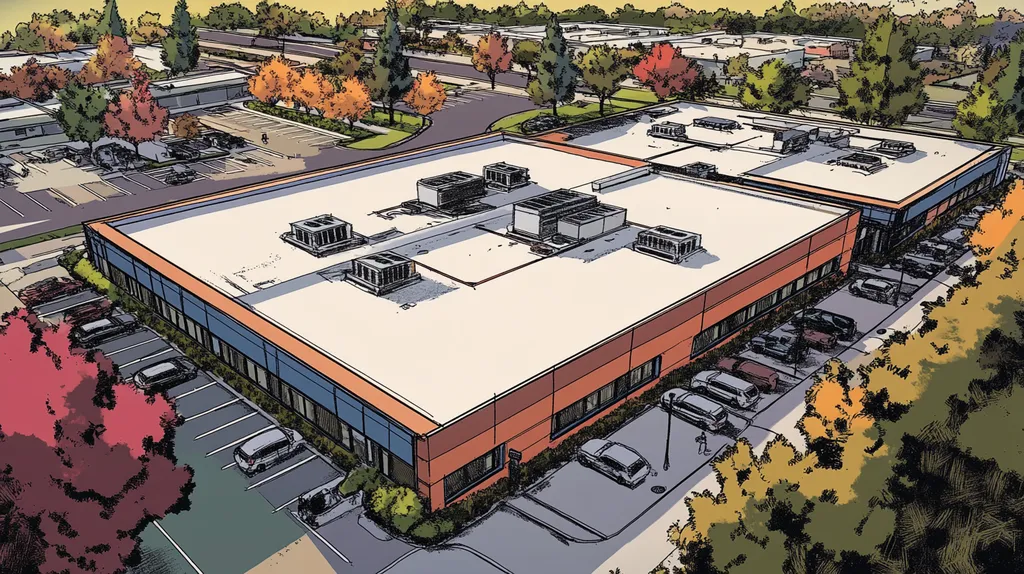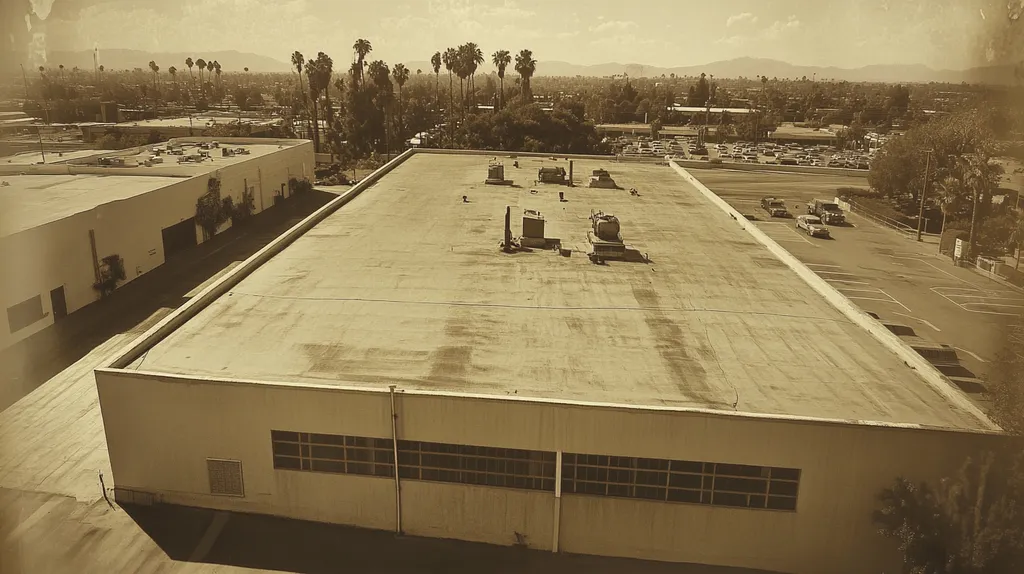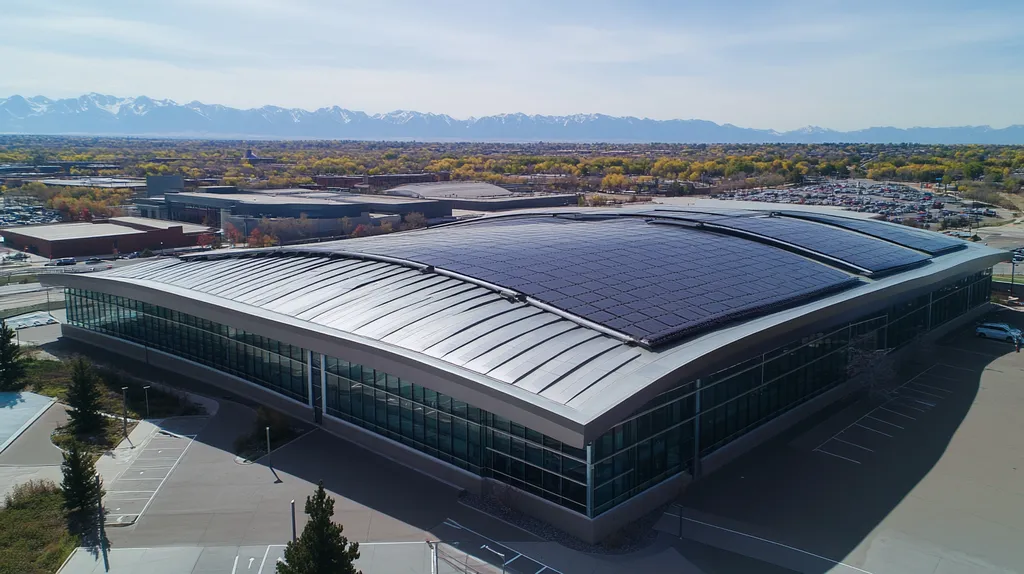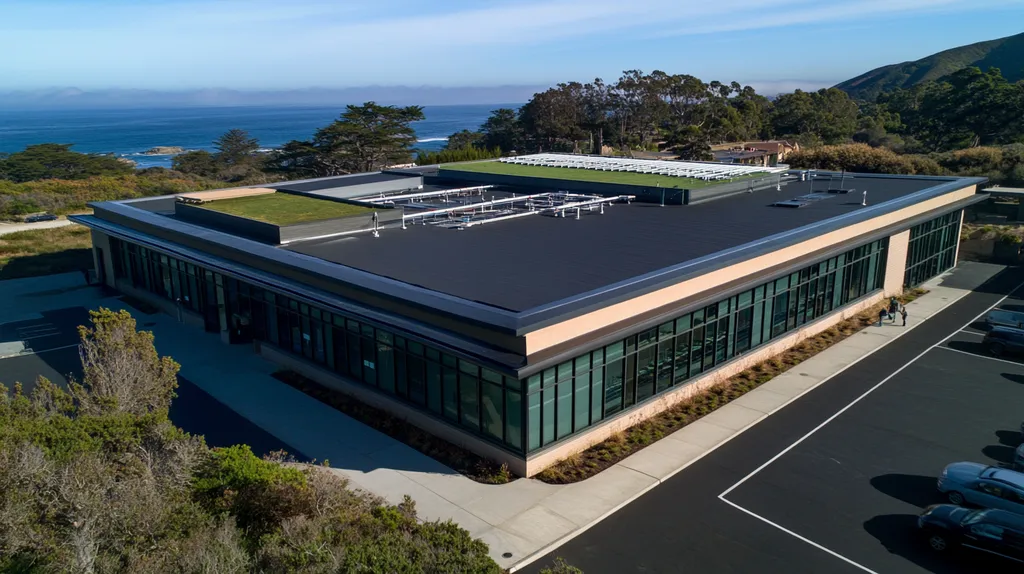Welcome to today’s Battle Royale featuring two roofing heavyweights: “Polyurethane Coatings” in the east corner versus “Intumescent Coatings” in the west!
Tonight’s showdown pits these contenders against each other across six punishing rounds designed to test every aspect of their performance for Fire Safety for Commercial Roof Coatings.
At stake? Millions in potential costs, decades of building protection, and the critical performance demands of modern commercial and industrial facilities.
Our professional judging panel will evaluate each round on technical merit, real-world performance, and value delivery. After all six rounds, we’ll declare our ultimate champion.
Ladies and gentlemen, facility managers and building owners… it’s time to rumble!
ROUND 1: INITIAL COSTS & INSTALLATION
When evaluating commercial roof coatings, property owners face critical decisions that impact both safety and financial outcomes. Fire-resistant roof coatings must meet stringent UL 790 and ASTM E108 standards, which establish different classes of fire resistance based on exposure severity. Understanding these requirements is essential, as they vary by building type and location, directly affecting initial investment and compliance costs.
Material Expenses
The selection of roof coating materials significantly impacts both initial costs and long-term fire safety compliance. Class A roof assemblies offer the highest level of fire protection and can be used wherever Class A, B, or C roofs are required. (source: Tile Roofing)
Polyurethane coatings typically cost 30-40% less per square foot than intumescent alternatives. Their lower material costs make them attractive for projects with tight budgets, though they may require additional fire-resistant treatments to meet code requirements.
Intumescent coatings command premium pricing due to their specialized fire-resistant properties. While the upfront cost is higher, these coatings often include built-in compliance with stringent fire safety standards.
When considering long-term value and code compliance, the higher material cost of intumescent coatings often proves justified. ADVANTAGE: POLYURETHANE COATINGS (on pure initial cost basis).
Installation Complexity
Installation procedures directly affect project timelines and labor costs. Proper application is crucial for maintaining fire-resistant properties and ensuring code compliance.
Polyurethane coatings feature straightforward application methods requiring minimal specialized training. Their forgiving nature allows for faster application and fewer technical requirements during installation.
Intumescent coatings demand precise application techniques and careful attention to thickness requirements. Their installation requires specialized training and certification, increasing labor costs and complexity.
The simpler installation process of polyurethane coatings translates to lower labor costs and reduced chance of application errors. ADVANTAGE: POLYURETHANE COATINGS.
Project Timeline
Time efficiency in commercial roofing projects directly impacts business operations and overall costs. Rushed installations can compromise fire safety ratings and lead to costly corrections.
Polyurethane applications typically complete in half the time of intumescent installations. Their quick-curing properties and simple application process minimize facility disruption.
Intumescent coatings require longer curing times between coats and more detailed quality control checks. However, this thoroughness ensures proper fire protection performance and compliance.
While polyurethane offers faster completion times, the additional time invested in intumescent installation provides superior fire protection assurance. ADVANTAGE: POLYURETHANE COATINGS.
ROUND 1 WINNER: POLYURETHANE COATINGS
ROUND 2: DURABILITY & LIFESPAN
The longevity of commercial roof coatings directly impacts building protection and financial planning. Modern coating systems must withstand intense UV exposure, thermal cycling, and physical abuse while maintaining their protective properties. The wrong choice can lead to premature failure, compromising both safety standards and budget allocations.
Weather Resistance
Commercial roof coatings face constant exposure to UV radiation, temperature extremes, and moisture. These environmental stressors can degrade coating performance over time, potentially compromising both structural integrity and fire safety properties.
Polyurethane coatings demonstrate exceptional resistance to UV exposure and maintain flexibility through thermal cycles. Their molecular structure allows them to withstand temperature fluctuations while retaining protective properties for 15-20 years under normal conditions.
Intumescent coatings, while effective for fire protection, can show earlier signs of weathering and may require more frequent maintenance. Their specialized chemistry makes them more susceptible to UV degradation, potentially reducing their effective lifespan to 7-12 years.
ADVANTAGE: POLYURETHANE COATINGS
Physical Durability
Roof coatings must maintain their protective properties despite regular foot traffic, equipment maintenance, and potential impacts. Test procedures simulate these real-world conditions, exposing coating systems to simulated wind conditions and various physical stresses. (source: Intertek)
Polyurethane coatings offer superior resistance to physical abuse, maintaining their protective barrier even under regular maintenance traffic. Their high tensile strength and excellent tear resistance make them ideal for high-traffic commercial roofs.
Intumescent coatings typically require additional protective layers when used in high-traffic areas. Their specialized fire-protective chemistry can make them more susceptible to physical damage and abrasion.
ADVANTAGE: POLYURETHANE COATINGS
Maintenance Requirements
Regular maintenance impacts both long-term performance and total ownership costs. Proper upkeep ensures coatings maintain their protective properties and meet ongoing safety requirements.
Polyurethane coatings typically require minimal maintenance beyond routine inspections and basic cleaning. Their chemical stability and physical durability reduce the need for frequent repairs or recoating.
Intumescent coatings demand more rigorous inspection schedules and may require periodic reapplication to maintain fire-protective properties. Their specialized nature often necessitates expert assessment to ensure ongoing performance.
ADVANTAGE: POLYURETHANE COATINGS
ROUND 2 WINNER: Polyurethane Coatings
ROUND 3: PERFORMANCE FACTORS
Commercial roofing decisions carry significant weight when it comes to fire safety performance. Every year, roof-related fires cause millions in property damage and business interruption costs. The right coating choice can mean the difference between containing a minor incident and facing catastrophic losses.
Fire Resistance Capabilities
Fire resistance capabilities represent the core metric for evaluating commercial roof coating effectiveness. Building codes and insurance requirements increasingly demand documented fire resistance ratings, making this factor crucial for compliance and risk management.
Polyurethane coatings offer baseline fire resistance through their chemical composition. However, they typically require additional treatments or layers to achieve higher fire ratings, potentially complicating installation and maintenance.
Intumescent coatings are specifically engineered to expand and create an insulating char barrier when exposed to heat. This unique characteristic provides superior protection against flame spread and heat transfer.
The specialized fire-resistant properties of intumescent coatings make them the clear leader in this category. ADVANTAGE: INTUMESCENT COATINGS.
Thermal Performance
A coating’s behavior under extreme heat conditions directly impacts building safety and structural integrity. Performance testing shows significant variations in how different coatings maintain their protective properties during fire events.
Polyurethane coatings begin to lose effectiveness at sustained temperatures above 200°F. Their degradation under intense heat can create potential failure points in the roof system.
Intumescent coatings maintain their protective properties at temperatures exceeding 1000°F. Their expanding foam barrier provides crucial time for emergency response while protecting underlying structures.
Given their superior performance under extreme heat conditions, intumescent coatings demonstrate clear superiority. ADVANTAGE: INTUMESCENT COATINGS.
Post-Incident Recovery
The ability to assess and restore fire protection after an incident impacts both safety and operational continuity. Quick recovery capabilities can mean the difference between minor repairs and complete system replacement.
Polyurethane coatings often require complete removal and replacement after exposure to significant heat. Their chemical structure changes permanently when exposed to high temperatures, compromising future performance.
Intumescent coatings allow for easier assessment of affected areas and targeted repairs. Their distinctive reaction to heat provides clear visual indicators of compromised sections.
The more manageable recovery process of intumescent coatings provides significant advantages for facility operations. ADVANTAGE: INTUMESCENT COATINGS.
ROUND 3 WINNER: INTUMESCENT COATINGS
ROUND 4: MAINTENANCE REQUIREMENTS
Long-term maintenance of fire-resistant roof coatings represents a critical yet often overlooked aspect of building safety. Without proper upkeep, even the most advanced coating systems can degrade, compromising their fire protection capabilities and putting millions in property value at risk. Understanding these maintenance requirements helps facility managers make informed decisions that balance protection with operational efficiency.
Inspection Frequency
Regular inspections form the foundation of effective coating maintenance programs. These evaluations must assess both surface conditions and underlying fire protection capabilities to ensure ongoing safety compliance.
Polyurethane coatings require quarterly visual inspections and annual detailed assessments. Their susceptibility to UV degradation and physical wear demands frequent monitoring to maintain fire-resistant properties.
Intumescent coatings typically need only semi-annual visual checks and biennial detailed inspections. Their specialized chemistry provides inherent stability, reducing the frequency of required evaluations while maintaining fire protection.
ADVANTAGE: INTUMESCENT COATINGS
Repair Complexity
The ease and effectiveness of repairs directly impact both maintenance costs and system reliability. Quick identification and resolution of coating issues prevents compromised fire protection.
Polyurethane coating repairs often require extensive surface preparation and careful material matching. Their chemical properties make patch repairs challenging, often necessitating larger area recoating to maintain uniform protection.
Intumescent coating repairs can typically be completed with minimal surface preparation and seamless integration. Their formulation allows for spot repairs without compromising the overall fire-resistant barrier.
ADVANTAGE: INTUMESCENT COATINGS
System Longevity
The relationship between maintenance requirements and coating lifespan significantly impacts total ownership costs. Understanding this connection helps facility managers optimize their maintenance investments.
Polyurethane coatings typically require complete recoating every 10-15 years, even with proper maintenance. Their gradual degradation from environmental exposure necessitates eventual full replacement to maintain fire protection.
Intumescent coatings can maintain their fire-resistant properties for 20-25 years with standard maintenance. Their specialized formulation provides extended service life without requiring complete renewal.
ADVANTAGE: INTUMESCENT COATINGS
ROUND 4 WINNER: INTUMESCENT COATINGS
ROUND 5: SUSTAINABILITY CREDENTIALS
Environmental impact has become a critical factor in commercial roofing decisions, with regulations and market demands pushing sustainability to the forefront. Modern roof coatings must balance fire safety with environmental stewardship, as poor choices can lead to increased carbon footprints and regulatory penalties. Understanding the sustainability profiles of different coating options helps property owners make decisions that protect both their assets and the environment.
Environmental Impact
The manufacturing and application processes of roof coatings significantly influence their environmental footprint. Understanding these impacts helps property owners align their choices with sustainability goals while maintaining essential fire safety standards.
Polyurethane coatings typically require less raw material during production and generate minimal waste during application. Their efficient manufacturing process and lower VOC emissions during installation contribute to a reduced environmental impact.
Intumescent coatings often demand more intensive production processes and specialized materials. Their complex chemical composition and higher material requirements result in a larger carbon footprint during manufacturing.
ADVANTAGE: POLYURETHANE COATINGS
Energy Performance
A coating’s ability to enhance building energy efficiency directly impacts both environmental sustainability and operational costs. The right choice can significantly reduce heating and cooling demands throughout the year.
Polyurethane coatings excel in solar reflectivity and thermal resistance, reducing cooling loads by up to 30%. Their consistent performance across temperature ranges helps maintain building efficiency year-round.
Intumescent coatings focus primarily on fire protection, with thermal efficiency as a secondary benefit. While they provide excellent insulation during fire events, their day-to-day energy performance lags behind polyurethane alternatives.
ADVANTAGE: POLYURETHANE COATINGS
Life Cycle Assessment
Understanding the full environmental impact from production through disposal helps property owners make truly sustainable choices. This assessment includes material sourcing, installation impacts, and end-of-life considerations.
Polyurethane coatings offer excellent durability and can often be recoated rather than fully replaced. Their extended service life and potential for recycling contribute to reduced waste and environmental impact over time.
Intumescent coatings require more frequent replacement and generate more waste during removal. Their specialized chemistry can also complicate recycling efforts and proper disposal procedures.
ADVANTAGE: POLYURETHANE COATINGS
ROUND 5 WINNER: POLYURETHANE COATINGS
ROUND 6: SPECIALIZED APPLICATIONS
In specialized commercial roofing applications, the stakes for proper fire protection couldn’t be higher. Chemical storage facilities, data centers, and manufacturing plants require exceptional fire safety measures due to their unique operational risks. The wrong coating choice in these environments can lead to catastrophic failures, resulting in millions in damages and potential loss of life.
High-Risk Industrial Applications
Industrial facilities with heightened fire risks require roofing systems that can withstand extreme heat exposure while maintaining structural integrity. These environments often contain hazardous materials, volatile processes, or critical equipment that demand superior protection.
Polyurethane coatings provide basic protection but struggle to maintain their protective properties under intense heat conditions. Their performance degrades rapidly when exposed to industrial processes generating high temperatures, potentially compromising facility safety.
Intumescent coatings excel in these environments, creating an expanding thermal barrier that actively resists flame spread. Their specialized chemistry provides crucial protection for sensitive industrial operations, meeting strict safety requirements for high-risk facilities.
ADVANTAGE: INTUMESCENT COATINGS
Temperature-Sensitive Environments
Facilities housing temperature-sensitive operations or materials require precise environmental control. The roofing system must maintain consistent thermal performance while ensuring fire safety.
Polyurethane coatings offer excellent everyday thermal regulation but can rapidly break down during fire events. This compromise in protection puts temperature-sensitive assets at risk during emergencies.
Intumescent coatings maintain both thermal stability and fire protection, creating an effective barrier against heat transfer. Their expanding protective layer provides critical time for emergency response while protecting sensitive equipment and materials.
ADVANTAGE: INTUMESCENT COATINGS
Multi-Use Facility Requirements
Modern commercial buildings often combine different operational areas with varying fire protection needs. These mixed-use environments demand flexible solutions that can adapt to different risk levels.
Polyurethane coatings provide consistent performance across general-use areas but may require supplemental protection in high-risk zones. This creates potential weak points in the overall fire safety system.
Intumescent coatings deliver comprehensive protection that meets the highest safety standards throughout the facility. Their versatile performance eliminates the need for multiple coating systems while ensuring consistent protection levels.
ADVANTAGE: INTUMESCENT COATINGS
ROUND 6 WINNER: INTUMESCENT COATINGS
AND THE WINNER IS…
After six grueling rounds of technical evaluation, we have our verdict. In a split decision that went the distance, INTUMESCENT COATINGS claims victory with four rounds to two!
The champion dominated the crucial fire safety categories, showing unmatched performance in specialized applications and maintaining superior protective properties under extreme conditions. Its knockout performance in Rounds 3, 4, and 6 demonstrated why it remains the undisputed defender of high-risk facilities.
However, don’t count POLYURETHANE COATINGS out of the fight! Its impressive showing in initial costs, durability, and sustainability makes it a strong contender for properties where budget constraints and environmental factors take priority over maximum fire protection.
IMPORTANT SAFETY DISCLAIMER: Every building presents unique challenges requiring specific evaluation. Local building codes, climate conditions, and facility operations all impact coating selection. This analysis provides general guidance but cannot account for all variables. Property owners should always consult qualified roofing professionals who can assess their specific requirements and recommend appropriate solutions.
Ladies and gentlemen, in the high-stakes arena of commercial roof protection, remember: The true champion is the coating system that best matches your facility’s specific fire safety requirements. Choose your fighter wisely – millions in property value and priceless lives hang in the balance!
FREQUENTLY ASKED QUESTIONS
Q. What are the costs for commercial roof coatings?
A. The initial costs for roof coatings vary. Polyurethane coatings are generally cheaper, costing 30-40% less per square foot than intumescent options. However, intumescent coatings may provide better long-term value due to their enhanced fire safety compliance.
Q. How does the durability of polyurethane coatings compare to intumescent coatings?
A. Polyurethane coatings typically outlast intumescent coatings in weather resistance, lasting 15-20 years. Intumescent coatings, while effective for fire resistance, may require more frequent maintenance and typically last 7-12 years.
Q. Which coating offers better fire resistance for commercial roofs?
A. Intumescent coatings provide superior fire resistance because they expand when heated, creating a protective barrier. Polyurethane coatings require additional treatments to achieve similar fire ratings but offer basic resistance.
Q. What maintenance do commercial roof coatings require?
A. Polyurethane coatings require quarterly inspections and annual assessments. In contrast, intumescent coatings typically need semi-annual checks with less frequent detailed inspections due to their chemistry providing greater inherent stability.
Q. Which coating is more sustainable for commercial roofing?
A. Polyurethane coatings generally have a lower environmental impact, using less raw material and generating fewer emissions during application. Intumescent coatings have a higher carbon footprint due to more intensive manufacturing processes.
Q. Are there specific applications for intumescent coatings?
A. Yes, intumescent coatings are ideal for high-risk industrial settings, providing exceptional fire protection where hazardous materials are present. They excel in environments where extreme heat and flame resistance are critical to safety.
Q. How do I choose between polyurethane and intumescent coatings?
A. Consider your building’s specific fire safety needs, budget, and maintenance capabilities. Evaluate factors like exposure to heat, required fire resistance, and environmental impact to determine the most suitable coating for your commercial roof.











